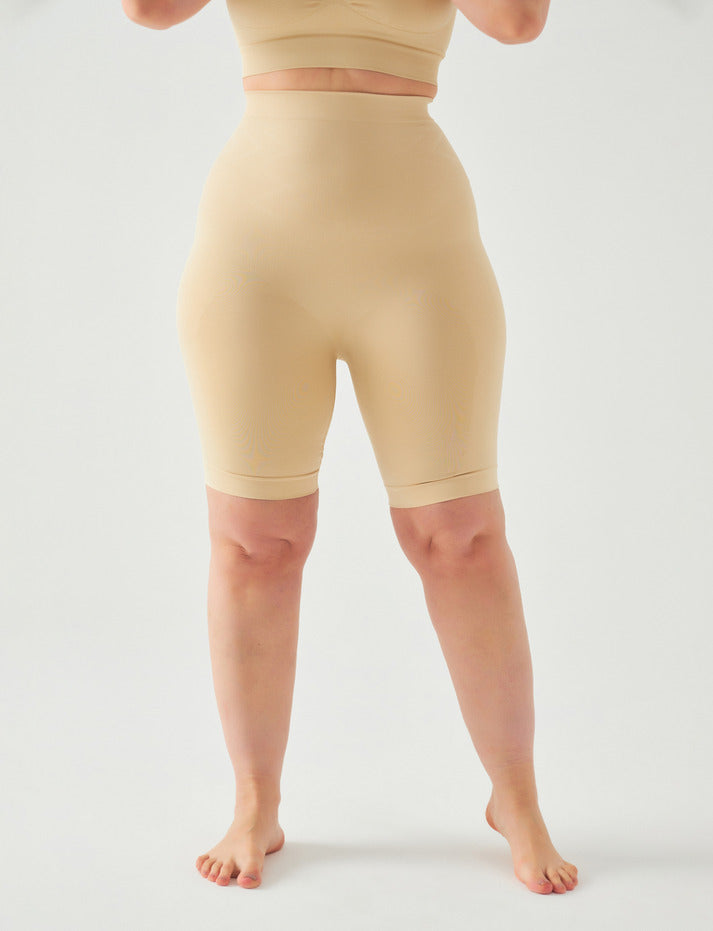Shapewear has been around for centuries, with women and men alike using various forms of compression garments to shape and sculpt their bodies. From ancient civilizations to modern-day, the history of shapewear is a testament to our constant desire to look and feel our best. We'll travel through time to see how shapewear became a multi-billion dollar industry in this article.
The History of Shapewear: A Journey Through Time
Ancient Times: The Birth of Shapewear
Shapewear can trace its origins back to ancient civilizations, where people used simple compression garments made from materials like linen and wool to shape and support their bodies. Girdles and corsets were worn by men and women in the Greeks and Romans to improve their silhouettes.
The Middle Ages: The Rise of Corsets
During the Middle Ages, the corset became a staple in women's fashion. Made from materials like whalebone and metal, corsets were designed to cinch the waist and lift the bust, creating the desired hourglass shape. The corset was often worn so tight that it caused health problems, including difficulty breathing and fainting spells.
The 19th Century: The Industrial Revolution and the Birth of Mass-Produced Shapewear
The Industrial Revolution brought about significant changes in the manufacturing of shapewear. Corsets were now mass-produced, making them more affordable and accessible to women of all classes. The initial girdles and other forms of shapewear were developed thanks to the development of the sewing machine, which also made it feasible to make more intricate designs.
The 20th Century: The Golden Age of Shapewear
In the 20th century, Hollywood flourished and glitzy starlets who possessed the ideal hourglass form first appeared. Shapewear became a staple of every woman's wardrobe as a result of the inspiration that celebrities like Marilyn Monroe and Elizabeth Taylor provided to women all over the world. The invention of elastic materials like Spandex made shapewear more comfortable and effective, leading to the creation of the first body shapers.
Modern-Day: The Multi-Billion Dollar Shapewear Industry
Shapewear has evolved into a multibillion dollar industry that markets to both sexes with a wide selection of garments. From slimming bodysuits to waist trainers, shapewear has become an integral part of the fashion industry. Celebrities like Kim Kardashian and Beyoncé have popularized shapewear, with their own lines of products available in stores worldwide.
Shapewear and Body Positivity
While shapewear has been criticized for promoting unrealistic beauty standards, many people argue that it can also be a tool for body positivity. By providing support and enhancing confidence, shapewear can help people feel comfortable in their own skin and embrace their unique bodies.
The Future of Shapewear
As technology continues to advance, the future of shapewear looks promising. To make shapewear more comfortable and effective, businesses are experimenting with novel materials and designs, such 3D printing and smart fabrics. As body positivity movements gain momentum, we may also see shapewear that's designed to celebrate and enhance our natural curves.
FAQs
Q: Is shapewear only for women?
A: No, shapewear is available for both men and women, with a wide range of products catering to different body types and needs.
Q: Is shapewear safe to wear?
A: Although wearing shapewear is generally safe, it's crucial to pick the proper size and type for your physique. Wearing shapewear that's too tight can cause health problems, including difficulty breathing and digestive issues.
Q: Can shapewear help with weight loss?
A: Shapewear is not designed to help with weight loss. While it can help to smooth and shape the body, it doesn't burn fat or calories.
Conclusion
The history of shapewear is a testament to our desire to feel and look our best, from ancient civilizations to the present. While shapewear has been criticized for promoting unrealistic beauty standards, it has also provided support and confidence to many people. Shapewear will continue to evolve to meet our evolving demands, but its core function will always be to make us feel good inside and out.

